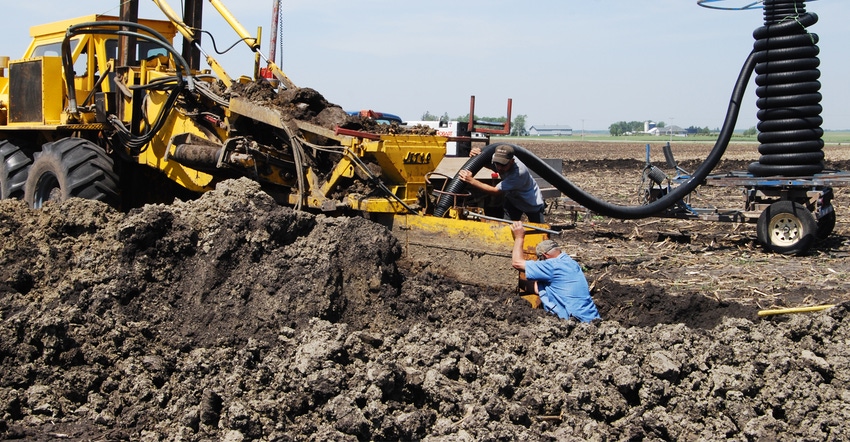September 19, 2018

Late March often brings the hope of a new growing season with longer days, machinery preparation and some early fieldwork. Winter often disappears by late March and early April.
This year in northern Iowa it was much different. Several snowstorms including an official blizzard affected northern Iowa in the spring. These snow events and some untimely rain delayed fieldwork for the most part until mid-May. Even in mid-May, farmers were greeted with wet fields and less-than-ideal field conditions.
We thought we ‘paid our dues’ in terms of weather following the challenging spring. However, we were mistaken. Heavy rains occurred on June 14 and several times after that. Some well-above-normal temperatures in late May and early June provided the corn extra incentive to make up for the later planting dates. The corn crop that “looked pretty good” after the delayed start now started to look bad.
Nitrogen loss, lack of drainage
Two things became very apparent by late June: lack of field drainage and nitrogen losses. There was a lot of yellow stunted corn by late June and early July.
Many farmers attempted to fix the nitrogen problem. Urea was applied by air and liquid nitrogen was applied by ground in some cases. This seemed to help, but it didn’t fix the real problem. Many fields had waterlogged areas that stunted corn growth until mid-July.
Some farmers have commented to me that many of our fields are going to need more tile drainage if we continue to get these 100-year floods every two years. These same farmers often ask for any unbiased research to document their struggles with wet fields.
Document benefits of drainage
Iowa State University has conducted tile drainage studies since 2007 at ISU’s Southeast Research Farm near Crawfordsville. This study compared the effects of tile drainage from a conventional design (4-foot depth, 60-foot spacing), a shallow design (2.5-foot depth, 40-foot spacing) and a controlled drainage design (4-foot depth, 60-foot spacing) where water levels are managed during summer. There is also an undrained control plot for comparison.
This 11-year study showed that all three of the drainage treatments had an average of 10-bushel-per-acre corn yield increase and a 4-bushel-per-acre soybean increase. The benefits of the drainage were much greater than this for a couple years.
Farmers have observed similar and even greater response to tile drainage installation in northwest Iowa fields. Yield impact from improved drainage will likely be greater than the yield benefits found in the southeast Iowa study.
Farmers need to make plans to improve field drainage. There are benefits in crop yields, field operation timeliness and nitrogen management. More information is at ISU’s website. Go online for the latest summary of the Crawfordsville drainage study.
Kassel is an ISU Extension field agronomist at Spencer in northwest Iowa. Contact him at [email protected].
About the Author(s)
You May Also Like






